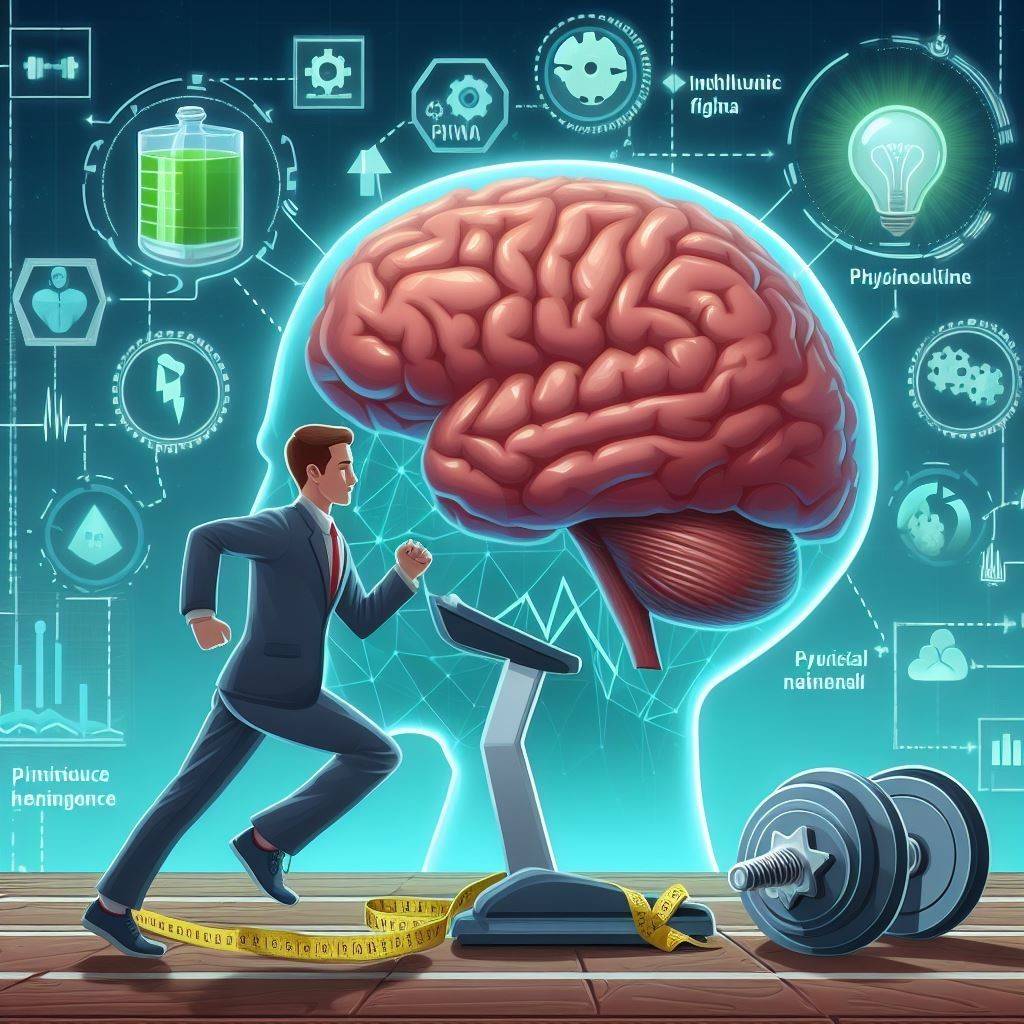Skill-Related Fitness: Boost Your Performance and Agility
Fitness isn’t just about running long distances or lifting heavy weights. It’s also about how well you can move and how quickly you can respond to different situations. This is called skill-related fitness. I’ve seen firsthand how focusing on these skills can make a vast difference, not just for athletes but for anyone who wants to move better in daily life.
In this post, I’m going to talk about the six main parts of skill-related fitness and how you can improve them. I’ve tried many of these exercises myself, and I’ve seen how they can boost performance. I’ll also answer some of the most common questions people have about skill-related fitness.
What Is Skill-Related Fitness?
Skill-related fitness is about how well your body can move and perform specific tasks. It’s especially important if you play sports or do any activity that requires quick movements and coordination. But it’s also useful in daily life. For example, being able to quickly change direction when you’re walking in a crowded area or maintaining your balance when carrying something heavy.
When I first started training, I didn’t think much about these things. I just wanted to get stronger and faster. However, as I began focusing on agility training and other skill-related components, I noticed vast improvements in how I moved. These skills help you react better and move more efficiently. I like this because it made everyday activities easier for me, too.
The 6 Components of Skill-Related Fitness
Skill-related fitness is made up of six parts: agility, balance, coordination, speed, power, and reaction time. Each one of these components can be improved with the right training.
1. Agility
Agility is how quickly you can change direction without losing control. It’s useful in sports like basketball, soccer, and tennis. I’ve noticed that when I work on agility drills, I can move faster and react quicker. For example, running through an agility ladder or weaving through cones helps improve your footwork and coordination.
Note: Explain that agility is important for everyday activities too, not just sports.
To improve agility, try doing agility training like:
- Ladder drills: Running through a ladder laid on the ground.
- Cone drills: Weaving in and out of cones to practice quick direction changes.
These exercises improve both your body’s ability to move and your brain’s ability to quickly respond.
2. Balance
Balance is all about staying steady, whether you’re moving or standing still. Good balance can help prevent falls, especially as we get older. I’ve tested different types of balance workouts, like standing on one leg or using a balance board. These exercises made a big difference in how steady I felt when walking or doing simple tasks like reaching for something high up.
To improve balance, you can try:
- Yoga: Many yoga poses focus on improving balance.
- Single-leg exercises: Try standing on one leg while you perform simple movements, like lifting weights.
3. Coordination
Coordination is how well you can use different parts of your body together. For example, throwing a ball involves your hand and eye working together. This is something I’ve always enjoyed working on because it’s fun and challenging. You can do coordination drills to improve this, like juggling or playing catch.
I noticed that by focusing on these drills; I became more efficient at tasks that required more than one part of my body to work together.
Here’s how you can practice coordination:
- Juggling: It’s a fun and effective way to improve hand-eye coordination.
- Playing catch: You can use a ball to practice catching and throwing.
Note: Coordination training is useful for sports but also improves basic motor skills.
4. Speed
Speed is how fast you can move in a stint. In sports like sprinting, swimming, or football, speed is everything. I have worked on speed training, and I’ve seen successful results not just in how fast I run, but in how quickly I can react to things.
One of my favourite ways to train for speed is doing quick exercises like short sprints or using resistance bands to add more difficulty. Speed is all about moving fast, and the more you practice, the quicker you’ll get.
Some ways to improve speed are:
- Sprints: Run short distances as fast as you can.
- Interval training: Alternate between fast and slow speeds during your workout.
5. Power
Power is a combination of speed and strength. It’s what helps you jump high or lift something heavy quickly. I’ve done a lot of plyometric exercises like box jumps or explosive squats, and these are great for improving power. When I worked on my power, I could see how much more explosive my movements became, both in sports and daily activities.
To increase power, try:
- Plyometrics: These are exercises that focus on quick, explosive movements. Think of box jumps or clap push-ups.
Note: Power training is essential for both athletes and anyone who wants to improve their dynamic movements.
6. Reaction Time
Reaction time is how quickly you respond to something. It’s super important in sports like boxing or even driving. I’ve worked on improving my reaction time by doing drills where I must respond quickly to a signal, like catching a ball or reacting to a visual cue. Over time, I noticed I became more alert and responsive.
To improve your reaction time, you can try:
- Reaction drills: For example, have a friend drop a ball and try to catch it as fast as you can.
- Video games: Surprisingly, certain video games can improve your reaction time because you must make quick decisions.
Note: Emphasize that improving reaction time isn’t just for athletes, but for daily tasks like driving.
Why Measuring Skill-Related Fitness Is Important?
When I first started training, I didn’t realize how important it was to measure my progress. I used to think that as long as I was working out; I was getting better. But then I started measuring my skill-related fitness, and I saw how much room there was to improve.
Measuring your skill-related fitness can help you track your progress and see what areas need more work. For example, you might have a successful balance but need to work on your speed. By measuring each component, you can target specific areas and enhance your overall performance.
How to Improve Skill-Related Fitness
Improving your skill-related fitness takes time, but it’s worth it. I’ve tried many exercises, and I’ve seen how they can boost performance. Here are some ways to improve each component:
- Agility Training: Try ladder drills or cone drills to improve your ability to change direction quickly.
- Balance Workouts: Yoga, standing on one leg, or using a balance board can help strengthen your balance.
- Coordination Drills: Practice catching a ball or juggling to improve your hand-eye coordination.
- Speed Training: Sprints, interval training, and resistance bands can help boost your speed.
- Power Training: Plyometric exercises like box jumps or explosive squats are great for increasing power.
- Reaction Time Improvement: Try quick reflex games or reaction drills to sharpen your response time.
Note: Providing actionable tips on how to improve each component helps the reader know exactly what to do.
FAQs About Skill-Related Fitness
What are the 6 skill-related fitness components?
The six components are agility, balance, coordination, speed, power, and reaction time. Each of these skills helps improve your overall performance in sports and everyday activities.
What is the purpose of measuring skill-related fitness?
Measuring skill-related fitness allows you to track your progress and see which areas need improvement. It’s important to focus on all six components to get the best results.
What is related to fitness?
Related fitness typically refers to health-related fitness, which includes endurance, strength, flexibility, and body composition. This type of fitness helps you maintain a healthy body, while skill-related fitness focuses on improving specific abilities.
What is skill work in fitness?
Skill work in fitness involves exercises that target specific abilities, such as agility, balance, or coordination. These exercises help improve your movement and overall physical performance.
Conclusion
Improving your skill-related fitness can enhance your performance in sports and everyday life. I’ve seen how focusing on things like agility, balance, and reaction time has honed me to move and feel stronger. By incorporating exercises that target each of these components, you can boost your fitness and enjoy the benefits of a more capable and agile body.
Remember, consistency is key. Start today with simple exercises, and you’ll see progress over time. Whether you’re an athlete or just looking to improve your daily movements, skill-related fitness is essential for everyone.
Recommended Reading
- Fitness Journey: Your Roadmap to Health, Happiness, and Strength
- Easy but Effective Workout Routines: 20 Ways to Sweat Smart, Not Hard



